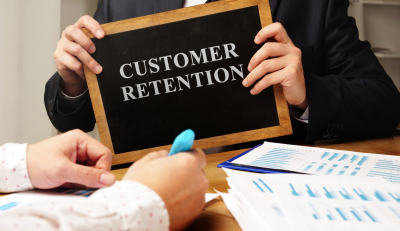The Art of Upselling: Maximizing Revenue from Existing Clients
As a seasoned insurance agent, you’re well aware that expanding your client base isn’t a walk in the park—it demands considerable time, monetary investment, and dedication. According to Bain & Company’s research, acquiring a new customer typically incurs six to seven times more costs than retaining an existing one.
This underscores the importance of upselling—offering additional or higher-value products and services to your current clientele—as a savvy and efficient means of driving up revenue and bolstering profitability. Upselling presents several advantages:
- Elevating Customer Lifetime Value (CLV): By encouraging clients to invest more in your offerings, you increase the total amount they spend over their entire engagement with you.
- Reinforcing Customer Loyalty: Satisfied clients are more inclined to remain with your services over time and may even refer others to your business.
- Strengthening Customer Satisfaction and Trust: Providing clients with tailored solutions and added value showcases your commitment to their needs, fostering trust and satisfaction.
But how does one become adept at upselling and seamlessly integrate it into their sales approach? Here are some tips and strategies to help you upsell successfully and ethically.
Know Your Products and Services
To effectively upsell, it’s essential to thoroughly understand your products and services, including their features, benefits, and value propositions. This knowledge enables you to demonstrate how your offerings address client needs and provide solutions. Additionally, being well-versed in pricing, discounts, and competitive advantages allows you to justify your offerings’ value and differentiate them from competitors.
Know Your Customers
It’s crucial to thoroughly understand your customers, including their needs, preferences, and pain points. Identifying their challenges, aspirations, and budget allows you to tailor your upselling approach accordingly. Additionally, being aware of their decision-making process and evolving buying behavior enables you to adapt your strategies over time.
Build Rapport and Trust
Building rapport and trust is essential for successful upselling. Effective communication, active listening, and genuine empathy demonstrate care for the customer’s success. Demonstrating credibility, professionalism, and reliability through credentials and testimonials reinforces trust. Exceeding expectations further solidifies the customer’s confidence in your services.
Ask Open-Ended Questions
The fourth step to successful upselling involves asking open-ended questions that prompt customers to provide valuable insights. These questions, starting with words like who, what, where, when, why, and how, encourage customers to share their needs, goals, and challenges. By delving into customers’ perspectives, you can uncover their pain points, opportunities, and interests, shaping tailored solutions. Furthermore, open-ended questions facilitate education about product benefits and foster engaging conversations, reinforcing genuine interest in customer success.
Provide Value and Solutions
The fifth step in effective upselling involves demonstrating value and offering solutions to customers, showcasing how your products and services align with their goals. This entails highlighting features and benefits that address customer needs and desires while comparing advantages and disadvantages to alternatives. Additionally, illustrating the return on investment (ROI) of your offerings can emphasize their potential benefits, whether in time savings, cost-effectiveness, or revenue generation. Utilizing stories, examples, or testimonials further reinforces the value proposition, showing real-world applications and success stories that resonate with customers.
Address Objections and Concerns
In the process of upselling, effectively managing objections and concerns is paramount to overcoming customer hesitations. This involves anticipating common objections like price, quality, or timing and preparing responses accordingly. Acknowledging and validating customer concerns demonstrates empathy and understanding, fostering trust. Addressing objections with facts, evidence, or guarantees reinforces the value proposition and resolves doubts. Seeking feedback ensures customer satisfaction and confirms resolution of any remaining questions or uncertainties.
Close the Deal
In the final stage of upselling, it’s crucial to close the deal effectively. Begin by summarizing the value and benefits of your offerings, emphasizing how they align with customer needs. Employ various closing techniques, such as trial closes, to gauge customer readiness and interest. Utilize assumptive closes to guide customers towards a decision by assuming their agreement to purchase. Additionally, alternative closes provide customers with options, facilitating decision-making and closing the sale smoothly.
Conclusion
Mastering the art of upselling is a valuable skill for insurance agents, enabling them to boost revenue from existing clients while enhancing business growth and reputation. Implementing the outlined strategies allows agents to ethically upsell and deliver added value to clients, fostering loyalty and trust. With these approaches, agents can effectively meet client needs while maximizing revenue opportunities, contributing to long-term business success.





